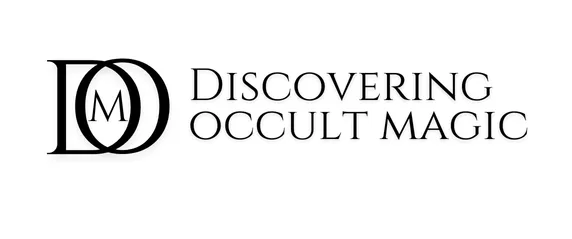Introduction
In the heart of Pagan tradition lies a rhythm, an ancient pulse aligned with the turning of the Earth and the shifting of the seasons. These rhythms are marked by the eight Sabbats, which are festivals that make up the Wheel of the Year. Far from being mere historical curiosities, these holidays offer modern Pagans a way to honour nature, connect with spiritual cycles, and find sacred meaning throughout the year.
Whether you identify as Wiccan, Druid, eclectic Pagan, or simply spiritually curious, celebrating the Sabbats is a way to step into the flow of natural time, which is something increasingly rare in our digital, disconnected age. Let’s explore what these holidays are, where they come from, and how they can be observed meaningfully today.
The Wheel of the Year: An Overview
The Wheel of the Year consists of eight Pagan major festivals; four solar and four seasonal cross-quarter days, each reflecting a key moment in the agricultural and astronomical calendar. These festivals are often split into two categories:
- The Greater Sabbats (Imbolc, Beltane, Lughnasadh, Samhain) which are traditionally rooted in Celtic celebrations.
- The Lesser Sabbats (the solstices and equinoxes: Yule, Ostara, Litha, and Mabon) that are based on solar events.
Together, they form a full cycle of birth, growth, decline, and renewal.
The Eight Sabbats and How to Celebrate Them
1. Yule (Winter Solstice – around 21st December)
Yule marks the longest night and the rebirth of the Sun. It’s a festival of hope, light, and the promise of new life.
Ways to Celebrate:
- Decorate with evergreen boughs, holly, and candles.
- Burn a Yule log (actual or symbolic).
- Reflect on the past year and set intentions for the next.
2. Imbolc (1st–2nd February)
Associated with Brigid, goddess of poetry, healing, and the hearth, Imbolc is a celebration of purification and renewal as winter begins to loosen its grip.
Ways to Celebrate:
- Light candles in every room at sunset.
- Cleanse your space (ritually or practically).
- Create Brigid’s crosses or dedicate offerings to her.
3. Ostara (Spring Equinox – around 20th March)
Ostara is a time of balance between light and dark, as well as fertility and rebirth. It’s the festival from which many Easter customs derive.
Ways to Celebrate:
- Decorate eggs as symbols of potential.
- Plant seeds – both literal and metaphorical.
- Honour the balance of opposites in your life.
4. Beltane (1st May)
Beltane celebrates fertility, fire, and the vibrant life force of spring in full bloom. It is a joyful, sensual, and celebratory Sabbat.
Ways to Celebrate:
- Jump a fire (safely!) or light candles.
- Dance around a maypole or create flower crowns.
- Celebrate love and vitality in all its forms.
5. Litha (Summer Solstice – around 21st June)
At the height of the Sun’s power, Litha is a celebration of abundance, vitality, and the peak of the growing season.
Ways to Celebrate:
- Rise early to greet the dawn.
- Have a bonfire or outdoor feast.
- Meditate on your own personal power and growth.
6. Lughnasadh (1st August)
Also known as Lammas, this is the first harvest festival. It honours the grain god Lugh and the cycle of sacrifice and sustenance.
Ways to Celebrate:
- Bake bread from scratch.
- Share food in community.
- Offer thanks for personal and communal abundance.
7. Mabon (Autumn Equinox – around 21st September)
Mabon, the second harvest, is another point of balance – light and dark are equal again, but now the nights grow longer.
Ways to Celebrate:
- Prepare a feast of seasonal foods.
- Donate to those in need as part of the harvest.
- Reflect on what you are letting go of as the year wanes.
8. Samhain (31st October – 1st November)
Samhain is the final harvest and the Witches’ New Year. It is a time to honour ancestors, mourn the dead, and confront the mysteries of the unseen.
Ways to Celebrate:
- Create an ancestor altar.
- Perform divination or scrying.
- Walk in silence through nature to commune with the spirit world.
Why Celebrating the Pagan Sabbats Matters
In many spiritual traditions, sacred time is cyclical, not linear. By celebrating the Sabbats, we’re reminded of our place within the great turning of the Earth. These festivals are not just about looking back to ancient practices; they’re about rooting ourselves in the here and now, with reverence and intention.
Rituals don’t need to be elaborate. A moment of reflection, a lit candle, a walk in nature, or a shared meal can be as sacred as a full ceremonial rite. What matters is alignment, with nature, with spirit, and with the unfolding of the seasons both outside and within.
Final Thought
The Wheel of the Year turns, whether we mark its passage or not. But to step into it, mindfully, seasonally, spiritually, is to remember that we too are part of the Earth’s story. Each Sabbat is an invitation: to celebrate, to reflect, to participate in the mystery of change. And in doing so, to find magic in the ordinary flow of time.


I love following the Wheel Of The Year, celebrating life in presence and connected to the seasons. It grounds me, and fills me with gratitude.
Great article explaining it beautifully!